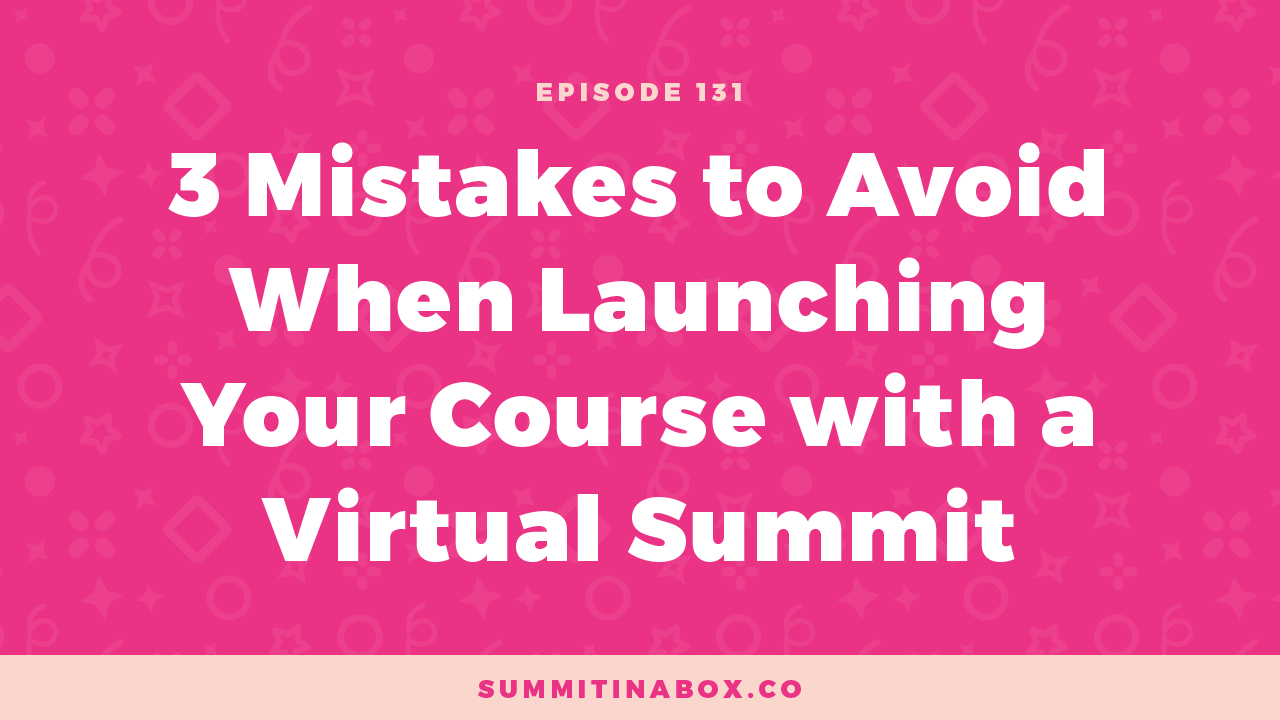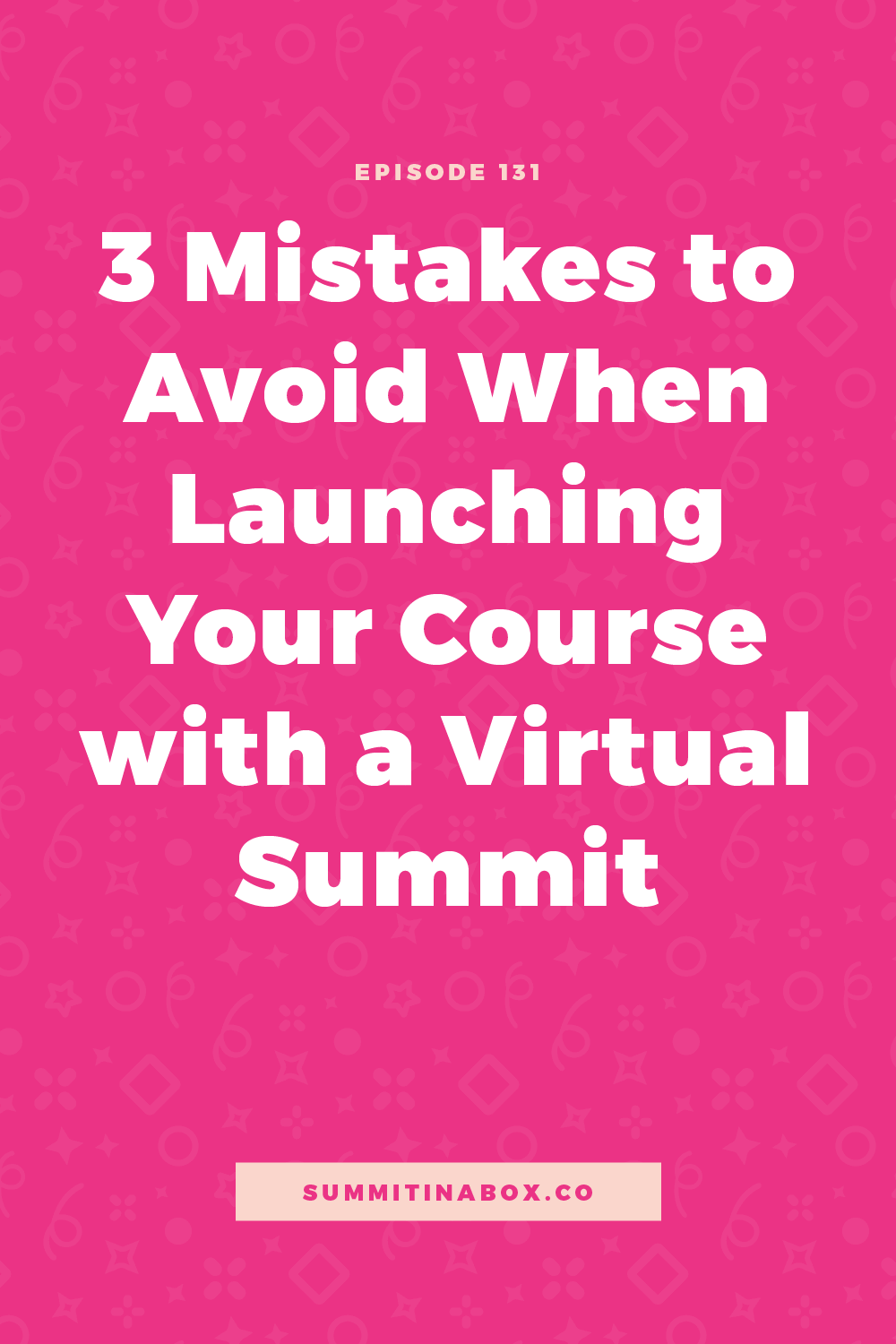3 Mistakes to Avoid When Launching a Course with a Virtual Summit


Summits are an incredible way to funnel your ideal audience into an offer you have, but there's definitely a wrong way to do it.
The first time I launched my course after my summit I brought in $63,000 from 1500 attendees. Imagine what we could do with bigger summits, bigger numbers. We can dream big with this. However, since I’ve been paying more attention to post-summit course launches, there're all kinds of places I’ve noticed hosts going wrong.
Constant pressure, skipping the trust-building aspect, and looking at attendees as worthless if they aren't willing to buy right away just isn't the way to go.
You can sell an offer through a virtual summit in a way that feels GOOD. Good to you, your attendees, and your speakers.
It comes down to...
- Building awareness of what you're selling through your summit without actually selling.
- Being upfront with your speakers and making sure they'll benefit through the launch as well.
- Creating a good balance between the summit and launch.
- Only selling to attendees who are ready for it at the end of the summit.
Let's cover the 3 biggest mistakes that I see.
Mistake #1: Positioning
The biggest mistake you can make with launching a course through a summit is incorrect positioning. If your summit and course launch don’t fit together strategically, it’s not going to work. The transformation your summit promises needs to line up with the transformation that your course provides.
How to Position Your Course
I’ve seen this summit to course positioning work well in 3 ways:
- Your summit and course have the same transformation, but the course goes deeper. For example, if you have an in-depth course about Instagram marketing you could host a summit about Instagram marketing. It’s okay for the overall positioning to be the same, but your course will go into more depth and have more resources.
- Your summit is step one and your course is step two. For example, your summit could be about starting a blog, which is step one. That could lead to a course about starting an email list to grow that blog, which is step two.
- Your summit helps attendees realize they need help with the transformation your course provides. For example, I ran Sell with a Summit: Course Creator Edition with Jenn Zellers, and we used that summit to sell my Summit in a Box® program. The summit promise was to reach your biggest course launch yet with a virtual summit, then my course promise is to host a profitable virtual summit without wondering where to start, what to do next, and there are 100s of resources to make it easy. It was a natural transition between the two.
You’ll likely find that one of these options sparks an idea that feels more natural than the others. Regardless of which option you choose (or if you think of another option), the transformation your summit provides must naturally lead into your course.
Mistake #2: Being Gross
The second mistake I see is hosts being gross when it comes to using their summit to launch a course. It's so easy to make the transition feel slimy.
What does "being gross" look like? Here are a few examples of things I've seen hosts do:
- Constant hard pitching - If you’re advertising a free summit to deliver a transformation, it’s not cool to hard pitch something paid all throughout. It doesn’t feel good to your attendees or to your speakers who expected to be featured throughout the event and are now overshadowed by you talking about your program constantly.
- A surprise launch - While you don’t want to bombard attendees with pitching, you also don’t want to do a bait and switch and hit them with a pitch they didn’t expect. Let your attendees know from the beginning that there’s an offer coming.
- Not being upfront with speakers - If a speaker has no idea you’re using the summit to lead into a course launch it’s not going to feel good to them when they figure out what’s going on. They’ll feel like they were being used for their promotion and presentation to benefit you and you alone. Make it clear from the beginning by including affiliate commission from the course launch as a speaker benefit.
- Pitch sequence to the entire attendee email list - It’s never going to feel good for someone to find you through a summit, have a couple of days to get to know you, and then be thrown into a week-long sales sequence if they didn't engage with your content. Segment your audience and only send launch information to attendees who are ready for it.
Mistake #3: Hosting a paid summit
The last mistake I see hosts make when launching a course through a summit is assuming that if they want people to convert to students then they need to host a paid summit.
Unless you have a large existing audience and an established business with a super niche topic, a paid event probably isn’t going to work. You can hear more about paid summits with Jordan Gill who hosts an incredible paid event.
Just because someone doesn’t buy right away during the summit doesn’t mean they aren’t going to be nurtured by you and ready down the road. For most cases, I’ll encourage you to stick with the freemium summit strategy that I focus on teaching.
Now, go position your summit!
Now it's time to figure out your best summit positioning. Be careful to make sure you position your summit the right way to lead to your course and that you use feel-good strategies.



